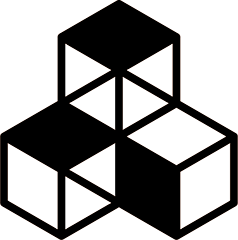CompPair’s HealTech allows composite materials to be repaired rather than thrown away, extending the life of products and reducing carbon emissions resulting from the need to manufacture new ones.
Benefits
- Faster, cheaper composite materials repairs
- Extends the life of composite materials
- Reduces waste and CO2 emissions
Applications
- Wind turbine blades
- Bicycle frames, golf clubs, and similar sports equipment
- Airplane wings and boat hulls
- Aerospace
UN Sustainable Development Goals Addressed
-

Goal 9: Industry Innovation & Infrastructure
-

Goal 12: Responsible Production & Consumption
-

Goal 13: Climate Action
The Challenge
When a bicycle frame or wind turbine blade cracks, it’s currently often cheaper and easier to replace the whole thing. Repairing carbon fiber and other composite materials is expensive and time consuming, and the repairs may introduce weak spots or affect the material’s performance. Alternatively, replacing items rather than repairing them means more manufacturing, and more manufacturing means more carbon dioxide released in the atmosphere, contributing to climate change. Researchers and innovators are looking for ways to extend the life of composite materials and items made of them to slow product replacement cycles, essential for adequate progress towards sustainability.
Biological Model
When living organisms suffer damage or injury, they have processes to heal themselves. When some plants are cut, latex oozes to the wound. This milky, sticky liquid quickly seals off the cut to prevent infection and launches the healing process. Eventually new tissue grows to knit up the plant’s wound.
Similarly, when an animal’s flesh is cut, blood will coagulate and the skin will eventually grow back together. While latex is a material itself, blood is composed of different kinds of cells and fluid that work together to heal. Platelets float through the bloodstream and stretch out tentacle-like structures that help grab and hold each other to seal up the wound and allow other cells to repair the injury further.
Innovation Details
Composites are typically a resin matrix reinforced with layers of carbon, glass, or natural fibers. These materials are strong and lightweight, but they’re also prone to cracks. Repairs can take hours, and even then the fibers may not recover their full integrity. Composite materials composed of fibers infused with CompPair HealTech™, can be repaired on site in one minute, using only a heat gun—and they can be repaired more than 60 times. This makes it easier, faster, and cheaper to repair items, reducing waste and greenhouse gas emissions. As a result, this innovation has the potential to drastically slow down product replacement cycles.
VIdeo: Self-healing Composite Material Boosts the Circular Economy

The Human Factor
Materials scientist and CompPair co-founder and CEO Amaël Cohades had been studying composites for years. He saw that some $22 billion a year is spent on repairing cracked and damaged composites, and as much as 70 percent of composite waste ends up incinerated or in landfills. “Why does everything we produce break?” he wondered. “Why can’t we have better products that last longer and create less waste?” He dreamed of a circular composite materials economy that mimics nature: damaged materials able to heal, continue to be used, and then decompose to form the basis of something new. For his Ph.D. dissertation at École Polytechnique Fédérale de Lausanne (EPFL), in Switzerland, he began studying self-healing composites, and not long after his defense, he had a breakthrough that made commercialization a real possibility. He and his cofounders spun off from the EPFL and founded the company CompPair, with the goal of replacing the industry’s typical difficult-to-fix, difficult-to-recycle composites with self-healing ones, reducing waste and ultimately saving resources.
Ray of Hope Accelerator
The Ray of Hope Accelerator supports an annual cohort of ten high-impact nature-inspired startups representing various sectors and regions addressing the world’s biggest environmental and sustainability challenges. The accelerator builds upon years of experience as the Ray of Hope Prize. Created in honor of Ray C. Anderson, founder of Interface, Inc. and a business and sustainability leader, the $100,000 Ray of Hope Prize (2020-2023) shone a light on the innovative, nature-inspired solutions that we need to build a sustainable and resilient world. CompPair was selected as a finalist for the 2023 Ray of Hope Prize.


